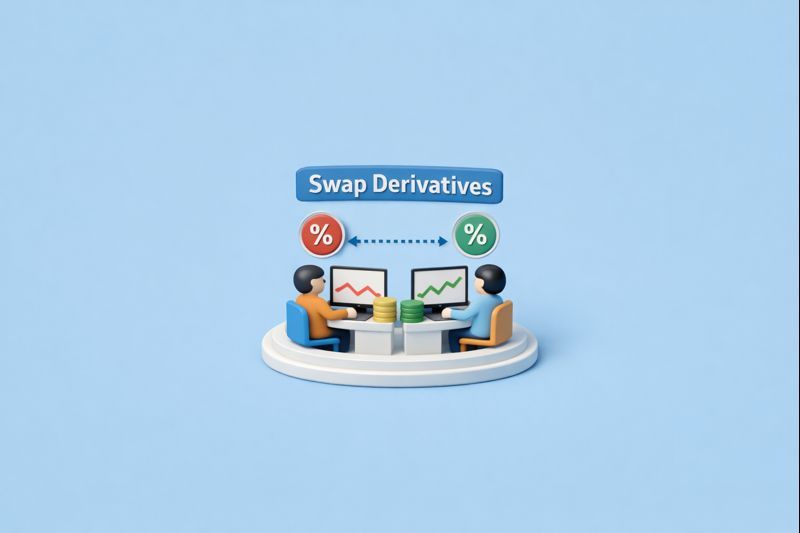- Home
- Blog
- Mutual Funds
- List of Mutual Funds Eligible for 80C Deduction
- List of Mutual Funds Eligible for 80C Deduction
List of Mutual Funds Eligible for 80C Deduction

- Published Date: February 27, 2023
- Updated Date: October 14, 2025
- By Team Choice
As a working professional and taxpayer, you might be on the lookout for more savings. That’s why you should check Section 80C of the Income Tax Act. The law allows you to enjoy substantial tax deductions, depending on where you invest.
One of the best investment options is ELSS mutual funds which is eligible for 80c and offers a tax reduction of up to INR 1.5 lakh under Section 80C. So, you can gain lucrative long-term returns and save taxes but still ElSS mutual funds taxable after 3 years.
So it’s essential to understand the various details of these ELSS funds to make a well-informed investment decision. That’s why we have discussed the top ELSS mutual funds in this post to help you. Let’s get started!
Benefits of ELSS Mutual Funds
Equity Linked Savings Scheme mutual funds allow you to save up to INR 46,800 and a tax rebate of INR 1,50,000. It's a great option to increase your income and your fixed salary.
The asset allocation of ELSS is directed toward equity-linked securities. You also get exposure to fixed-income securities through ELSS. So, you get a better chance of obtaining excellent returns, which is more than fixed deposits.
The best part? These mutual funds come with a lock-in period of 3 years, which no complicated rules for a premature exit. If you need the money invested in ELSS funds, you can withdraw it easily after the lock-in period.
Open a FREE Demat Account in 5 Mins.
- Free AMC for First Year
- Low DP Charges (₹ 10)
- No Auto Square Off Charges
- Free Research Calls
Also, this is among the lowest lock-in periods offered by mutual funds.
Another factor that makes ELSS mutual funds convenient for new investors is the starting investment amount. You can start investing in these once with a low amount, like INR 500 or 1000.
Saving money every month will enable you to conveniently invest in ELSS mutual funds. Other advantages of investing in ELSS funds include the following –
These are completely safe with transparent processes. SEBI monitors all ELSS funds, so you won’t have to worry.
You can invest in these funds through a systematic investment plan (SIP). So, you can invest a small or large amount of your choice monthly.
Also Read: ELSS vs SIP
Top ELSS Mutual Funds to Invest
It is crucial to check out the details and offerings of the popular ELSS mutual funds before you start investing. This way, you can manage your finances and save a certain amount for investments.
1. Mahindra Manulife ELSS Kar Bachat Yojana Direct Growth
This ELSS fund falls under Mahindra Mutual Funds' equity category. You can start investing here with a minimum amount of INR 500 for SIP. If you want to invest a lump sum, INR 500 is the minimum value.
The Mahindra Manulife ELSS Kar Bachat Yojana Direct Growth has a lock-in period of 3 years. Over the last 3 years, this Mutual Fund has provided annual returns of 18.91%.
Being under Section 80C, you can save more than INR 50,000. Getting a dedicated fund manager will give you the necessary guidance while operating the fund.
2. SBI Long Term Equity Fund Direct Plan Growth
This is another reliable ELSS fund presented by SBI. You can start this by investing as low as INR 500 for SIP and a lump sum. So, this can be a great investment option if you are at the beginning of your career.
You can get a return of 9.6% for a 1-year investment. Its return performance for the last three years has been excellent, around 64.62%. With the assistance of a fund manager, you can smoothly invest in this fund, as per your risk-taking appetite.
The SBI Long Term Equity Fund Direct Plan Growth has an open-end fund type. Further, it has no special charges for money withdrawal after the lock-in period, which is of 3 years.
3. Quant Tax Plan Direct Growth
The Quant Tax Plan Direct Growth falls under the equity category and has given investors annualized returns of 35.41%. For 5-year investments, they have received 21.93% of returns. Plus, 1-year returns are worth 6%.
Like the other plans, SIP and lump sum investments begin at a convenient amount of INR 500. So, both inexperienced and seasoned investors can invest in this fund.
Generating capital appreciation is primarily the objective of this mutual fund. However, it is considered to be a high-risk fund. So, proper knowledge of mutual funds and the market is necessary to prevent huge losses.
4. IDFC Tax Advantage (ELSS) Direct Plan Growth
The IDFC Tax Advantage (ELSS) Direct Plan Growth you with a one-year return of 6.2%. Its annualized return performance for the past three years is 22.26%, and 13.17% in the last 5 years.
Moreover, the fund offers a return of 1.32% for a 1-year investment. It is an open-ended equity-linked scheme with a lock-in period of 3 years. So, investors planning to explore equity and related security while enjoying Income Tax benefits can opt for the fund.
5. Bank of India Tax Advantage Direct Growth
If you want to invest in this fund for a year, you will receive returns of up to 4.8%. The fund has successfully provided an annualized return of 13.99% for the last 5 years and 19.26% for 3 years.
Even though it has a lock-in period of 3 years, it can help you save taxes of approximately 46,800 every year. Plus, there are no exit charges if you decide to withdraw the money before the lock-in period.
Investors who prefer a fund from a nationalized bank will find this mutual fund beneficial. Talk to your fund manager for more details on maximising your income through this ELSS fund.
6. Kotak Tax Saver Fund
This is another one of the popular ELSS mutual funds that provide a year return of 8.1%. So, it can be an ideal option for investors who want quick returns and benefits. Besides, the fund has offered 16.88% returns in the last three years and 14.52% in the past 5 years.
That’s why seasoned, and newbie investors tend to choose this fund to enhance their wealth. Firstly, the investment amount for a lump sum and SIP starts at INR 500. The fund lets you diversify your portfolio by investing in equity-linked securities.
Although it’s a high-risk fund, there’s no exit load on withdrawal before the lock-in timeframe ends. Being a fund from a reliable organization, you won’t face any operational issues.
Factors to Consider Before Investing In ELSS Mutual Funds
Before investing in an ELSS fund, you need to consider various factors like performance, risk, and your financial objective.
Primarily, consider its past performance. Check the amount of returns it has provided in the last 3 to 5 years. It will enable you to analyze how the fund has performed concerning the market conditions.
You also need to check the expense ratio of the fund. This includes the charges needed to maintain the fund, handled by the fund house. If you think it suits your finances, then go ahead with the fund. Moreover, check if brokers, distributors, and third parties are involved.
Lastly, choose a fund that matches your risk-taking appetite. Most ELSS funds are risky and are influenced by volatile market conditions. So, understand the details properly before investing your money.
The Bottom Line
It is always best to compare all the best ELSS mutual funds and delve into their benefits before investing. You can research online carefully while selecting the fund. Asking an experienced investor will give you more insight, or you can consult your fund manager.
Most importantly, create an emergency fund before you jump into these investments. Ensure not to spend the money in this fund anywhere. It will help you tackle unfortunate financial losses. To explore and invest in mutual funds like these you can open an account with choice with ease.
Avoid rushing into any investment and take decisions wisely!
FAQ
ELSS Tax Exemption Under Which Section
ElSS tax exemption is under the Section 80C of the Income Tax Act, 1961
SIP Deduction in Income Tax
SIP deduction in income tax on ELSS Mutual Fund is Rs 1.5 lakh from your taxable income.
What All Comes Under 80c
Utilizing tax deductions available through Section 80C can lead to a decrease in your tax liability. This includes investing in instruments like EPF, PPF, paying life insurance premiums, contributing to Equity Linked Saving Schemes, repaying the principal amount on a home loan, as well as investments in SSY, NSC, SCSS, and other eligible options.
How to Check if A Mutual Fund is Under 80c
To check if a mutual fund is eligible for Section 80C tax benefits:
- Verify fund type: Ensure it's an Equity Linked Savings Scheme (ELSS).
- Check investment tenure: ELSS has a mandatory lock-in period of 3 years.
- Consult tax expert: For accurate advice based on your specific situation.
Recommended for you

FII DII Data - Live Data

Share Market Prediction For Tomorrow

Market Prediction Today (24th December 2025)
